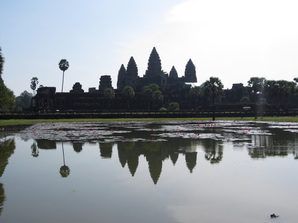
Angkor Wat's main temple
Siem Reap was a lovely city. The people were extremely hospitable and nice (similar to people in Bali), the food was delicious, and the historical sites were incredible. Unfortunately, Joe and I only had a weekend to explore the city (I would have liked a few more days), but we made the most of it.
My first few posts about this trip are dedicated to the day we spent exploring the many temples of Siem Reap. This posting in particular only covers Angkor Wat... I realized as I started writing this that there is a lot to share!
Because of Siem Reap's rich history, Joe and I decided it was best to book a tour to learn about everything. We hired a guide through Angkortourguides.com and spent the day with a Cambodian man named Savun. I highly recommend Savun... he was great! His English was good and he knew a ton about the history of Siem Reap. Additionally, he grew up during the reign of the Khmer Rouge, and it was incredible to hear his stories of survival. It's amazing to think that he survived such a terrible event in history and now lives in a truly different era. In fact, he was very proud that his daughter is getting an education. She is sponsored by a family in Chicago who pays for her schooling (she attends a private high school). She hopes to be a lawyer someday and I hope it works out for her!
Anyway... I diverge... back to the temples! We started our day at Angkor Wat, probably the most famous temple in Siem Reap. It is an expansive temple that was built in the 12th century, and switched hands between Buddhist and Hindu leaders throughout history. I'll admit, I don't remember everything Savun told us about the temple, so I encourage you to read more about Angkor Wat on the web.
My first few posts about this trip are dedicated to the day we spent exploring the many temples of Siem Reap. This posting in particular only covers Angkor Wat... I realized as I started writing this that there is a lot to share!
Because of Siem Reap's rich history, Joe and I decided it was best to book a tour to learn about everything. We hired a guide through Angkortourguides.com and spent the day with a Cambodian man named Savun. I highly recommend Savun... he was great! His English was good and he knew a ton about the history of Siem Reap. Additionally, he grew up during the reign of the Khmer Rouge, and it was incredible to hear his stories of survival. It's amazing to think that he survived such a terrible event in history and now lives in a truly different era. In fact, he was very proud that his daughter is getting an education. She is sponsored by a family in Chicago who pays for her schooling (she attends a private high school). She hopes to be a lawyer someday and I hope it works out for her!
Anyway... I diverge... back to the temples! We started our day at Angkor Wat, probably the most famous temple in Siem Reap. It is an expansive temple that was built in the 12th century, and switched hands between Buddhist and Hindu leaders throughout history. I'll admit, I don't remember everything Savun told us about the temple, so I encourage you to read more about Angkor Wat on the web.
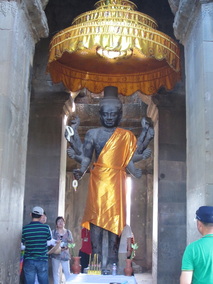
Hindu statue of the god Shiva
There is a large moat around Angkor Wat, so we had to walk across a bridge to get to the main complex. The bridge is guarded by lion statues as well as snake statues, whose bodies once extended all the way across the bridge. Unfortunately, much of Angkor Wat has fallen apart, and we had to imagine what the temple once looked like. We learned that the temple was destroyed by the many wars Cambodia has endured. In fact, there are bullet holes on the exterior of the temple. During wars, the temples were raided for goods and statues were beheaded out of disrespect. The temple was also destroyed by villagers who pillaged the stones to build their own homes. It's sad that people don't realize the significance of history until it is too late!
The walls of the temple are elaborately decorated with stone carvings that depict different stories, mostly of wars. Many of the ornate designs have been worn down by the weather and mistreatment, but the ones that are still in tact are spectacular. The artists responsible for them were extremely talented. Most of the etchings had a faint black color to them, but some of the walls also had a faint red color to them. We learned that when the Buddhists took over Angkor Wat, they colored the walls red.
The walls of the temple are elaborately decorated with stone carvings that depict different stories, mostly of wars. Many of the ornate designs have been worn down by the weather and mistreatment, but the ones that are still in tact are spectacular. The artists responsible for them were extremely talented. Most of the etchings had a faint black color to them, but some of the walls also had a faint red color to them. We learned that when the Buddhists took over Angkor Wat, they colored the walls red.
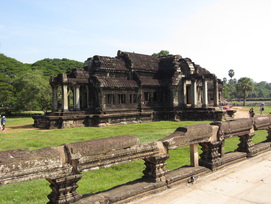
Library for priests
We trekked past several small buildings on the grounds of Angkor Wat as we headed towards the main complex (yes, all of the pictures I've shown you so far aren't even of the main building!). We learned that these were once libraries for the temple's priests, who were the scholars of Angkor Wat.
Before exploring the main complex, we stopped at a little rest area near Angkor Wat's cemetery. The space had both a pagoda for Buddhist monks as well as their living quarters. We saw young boys with shaved heads, and learned that these were monks-in-training.
We also saw a man cutting grass by hand on the grounds! Savun explained that all of the grass at Angkor Wat is cut by hand (although he didn't say why). I was blown away by this!
Before exploring the main complex, we stopped at a little rest area near Angkor Wat's cemetery. The space had both a pagoda for Buddhist monks as well as their living quarters. We saw young boys with shaved heads, and learned that these were monks-in-training.
We also saw a man cutting grass by hand on the grounds! Savun explained that all of the grass at Angkor Wat is cut by hand (although he didn't say why). I was blown away by this!
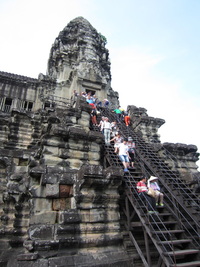
Climbing to the top of Angkor Wat
The next stop on the tour was the main complex of Angkor Wat. It is a three-story edifice with an extremely steep climb to the top. Joe and I were amazed by all of the elderly tourists who had the energy for the trek (there were many of them!).
The view from the top was great. We saw several open spaces on the ground that we later learned were pools for the king so that he could cleanse himself before doing holy activities.
After getting our fill of the view and of photos, we made the scary journey back down the steep stairs. My palms were sweaty, especially when nearly everyone in front of us stopped midway to have people at the bottom take photos of them on the stairs. Ah! I just wanted to make my way down quickly!
The view from the top was great. We saw several open spaces on the ground that we later learned were pools for the king so that he could cleanse himself before doing holy activities.
After getting our fill of the view and of photos, we made the scary journey back down the steep stairs. My palms were sweaty, especially when nearly everyone in front of us stopped midway to have people at the bottom take photos of them on the stairs. Ah! I just wanted to make my way down quickly!
Once at the bottom, we had a chance to take photos with Cambodians wearing traditional costumes. They even helped Joe and I pose with Cambodian dance hands.
Angkor Wat was incredible with an amazing, rich history! I'm glad we had the opportunity to visit the temple. Next stop on our temple tour was Ta Prohm... stay tuned!
Angkor Wat was incredible with an amazing, rich history! I'm glad we had the opportunity to visit the temple. Next stop on our temple tour was Ta Prohm... stay tuned!
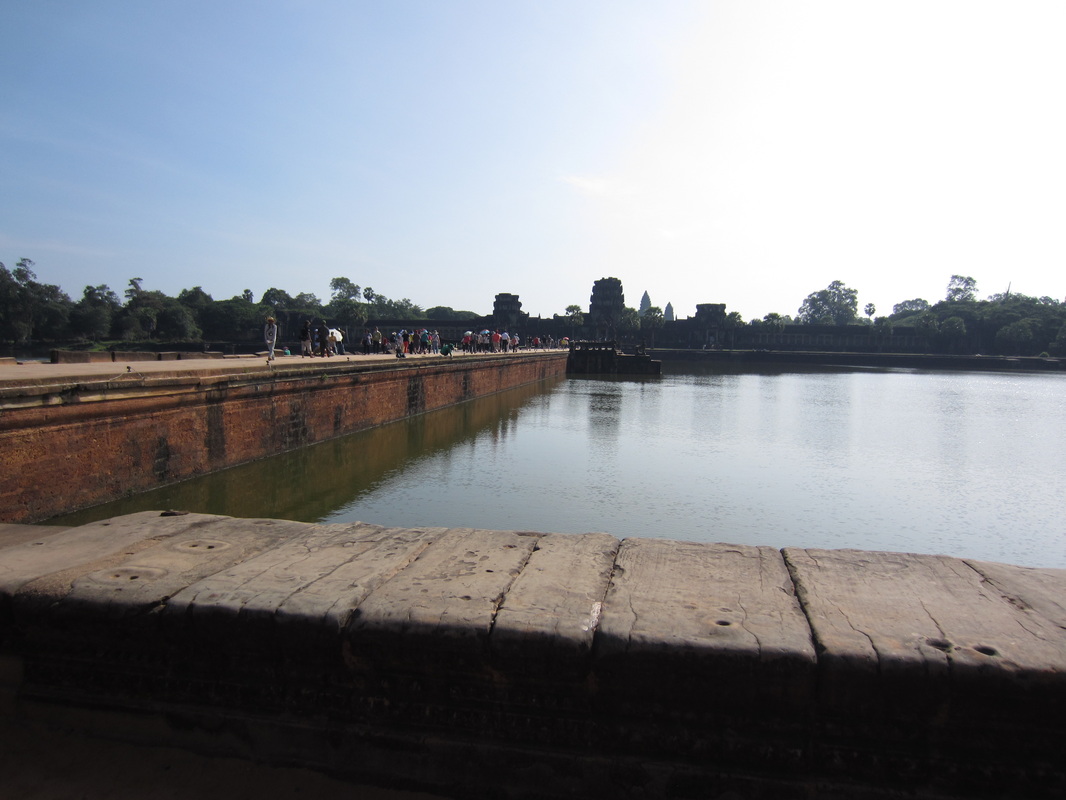
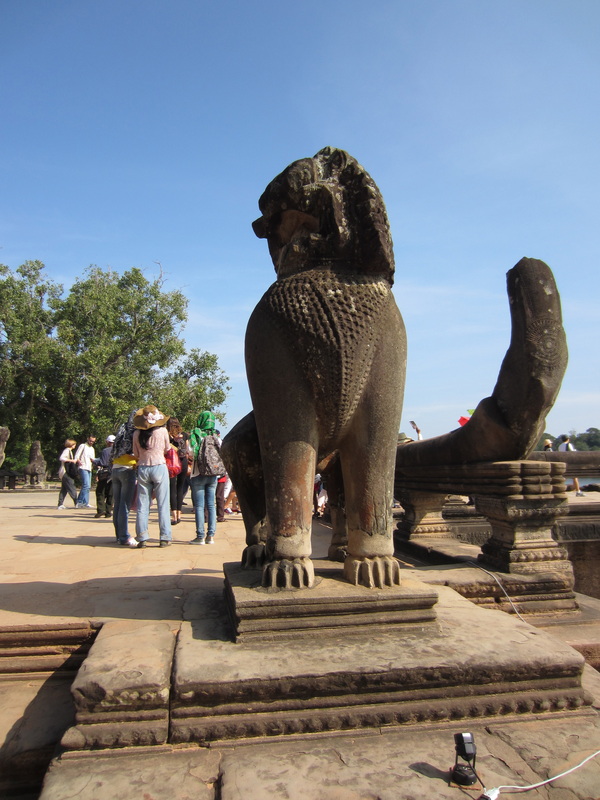
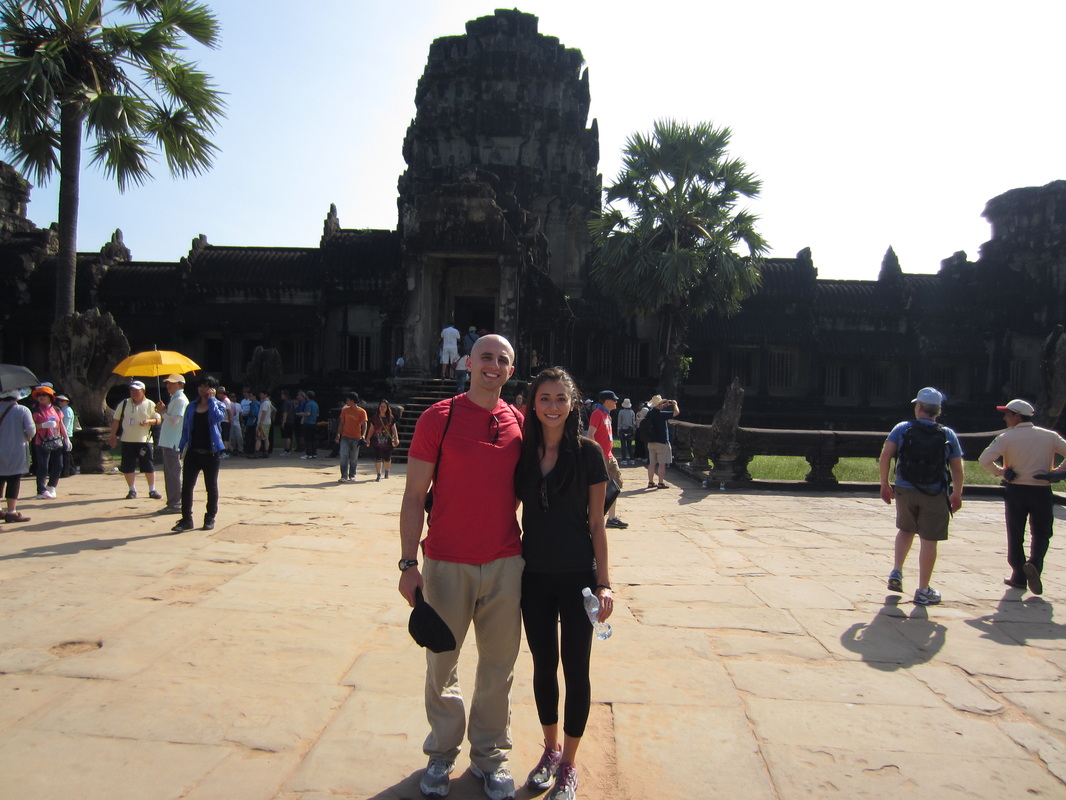
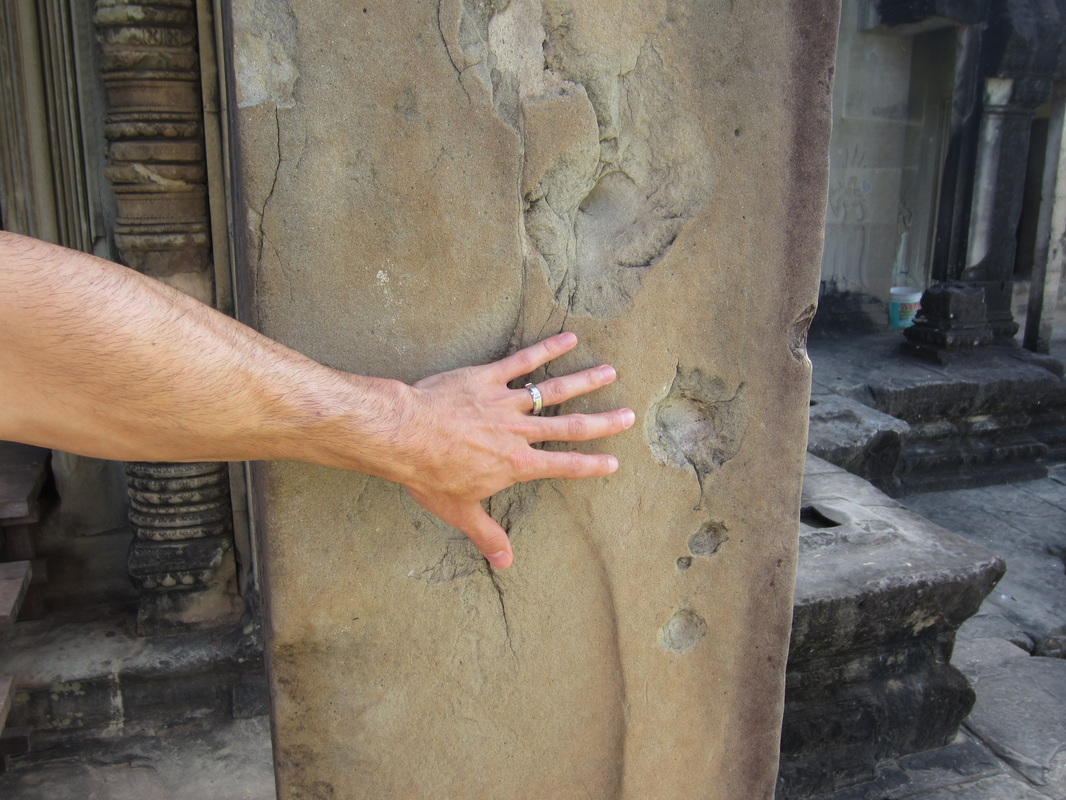
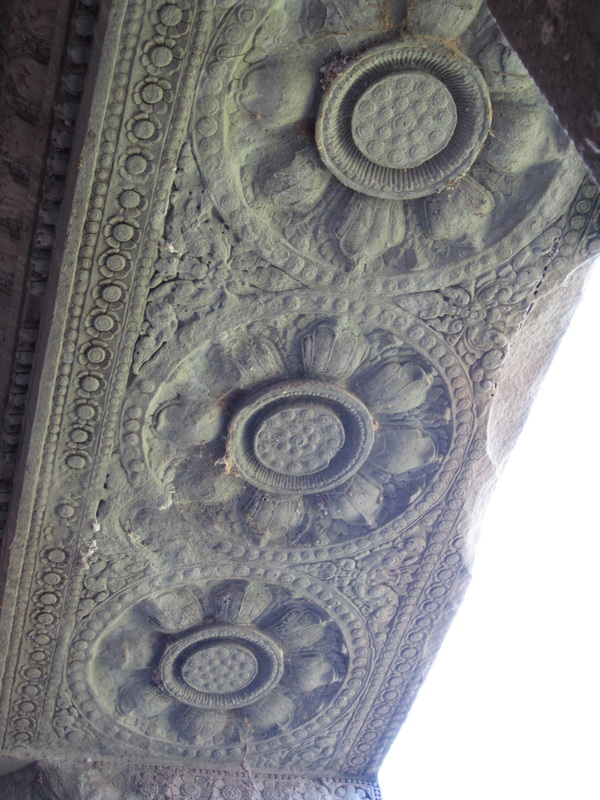
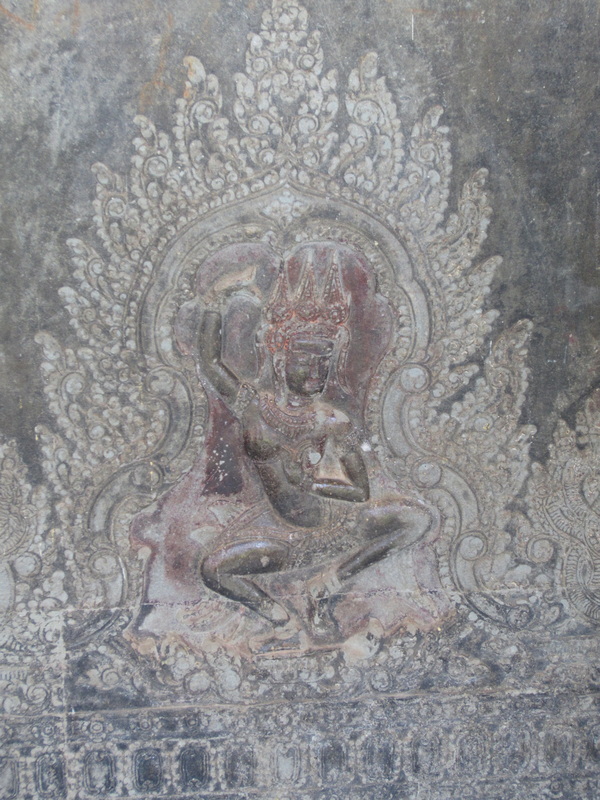
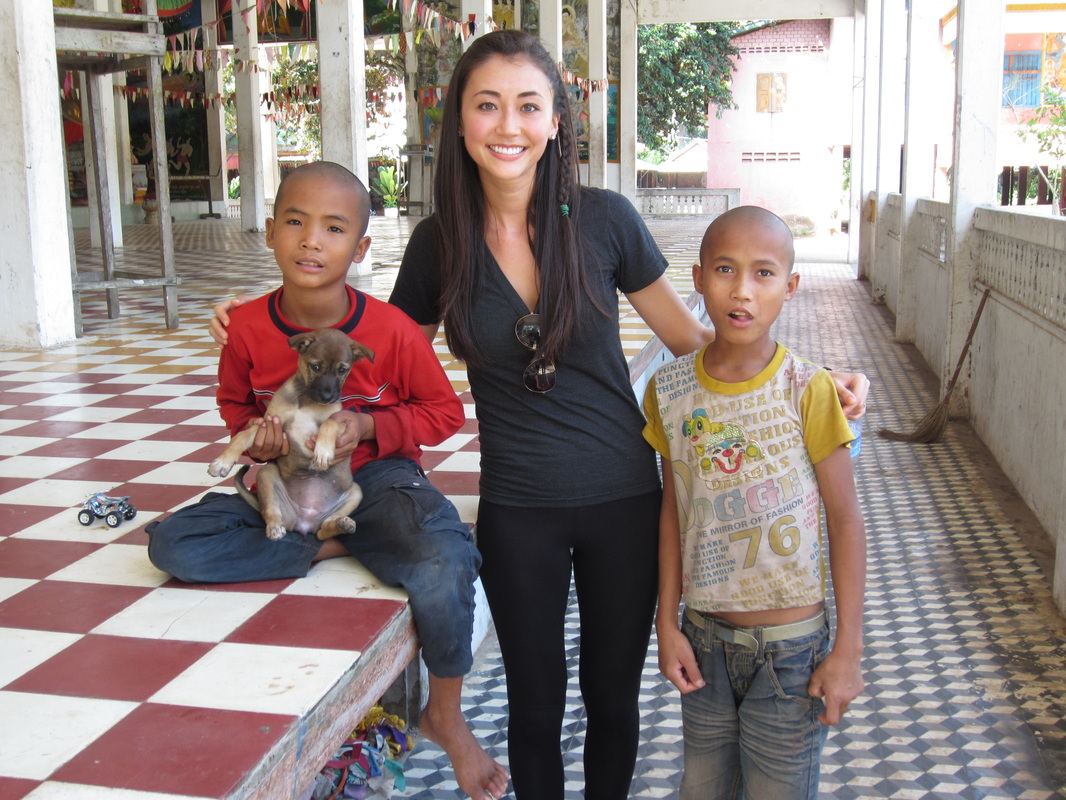
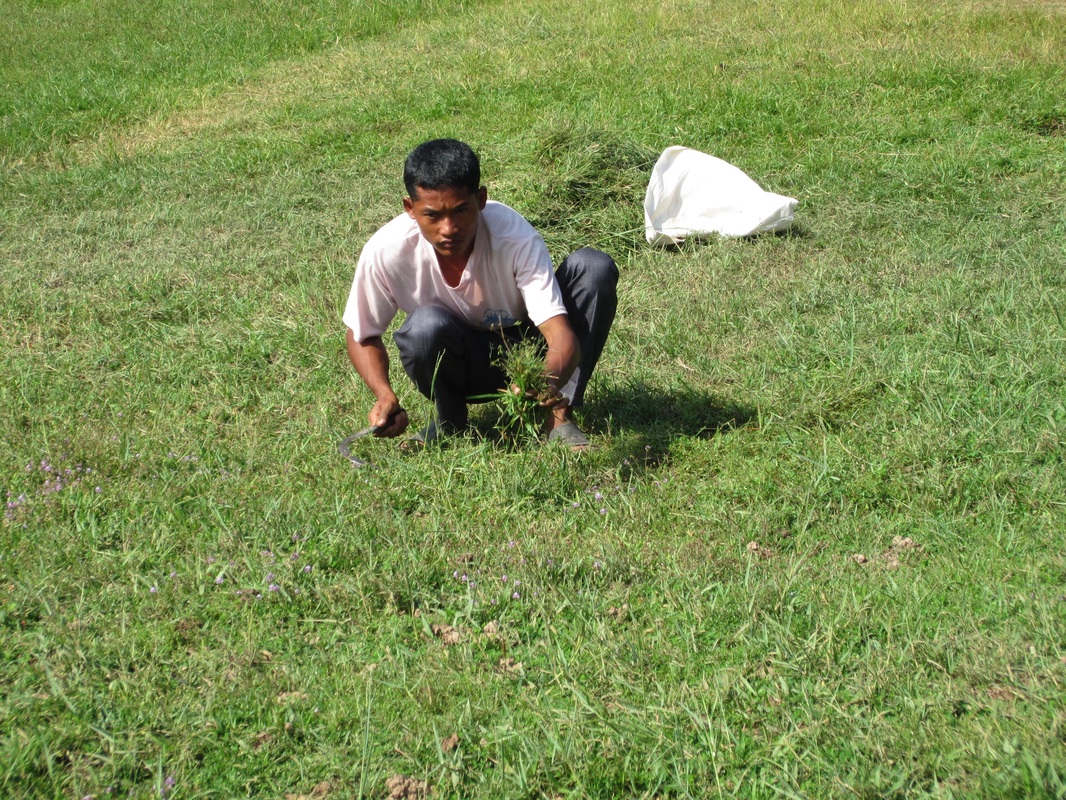
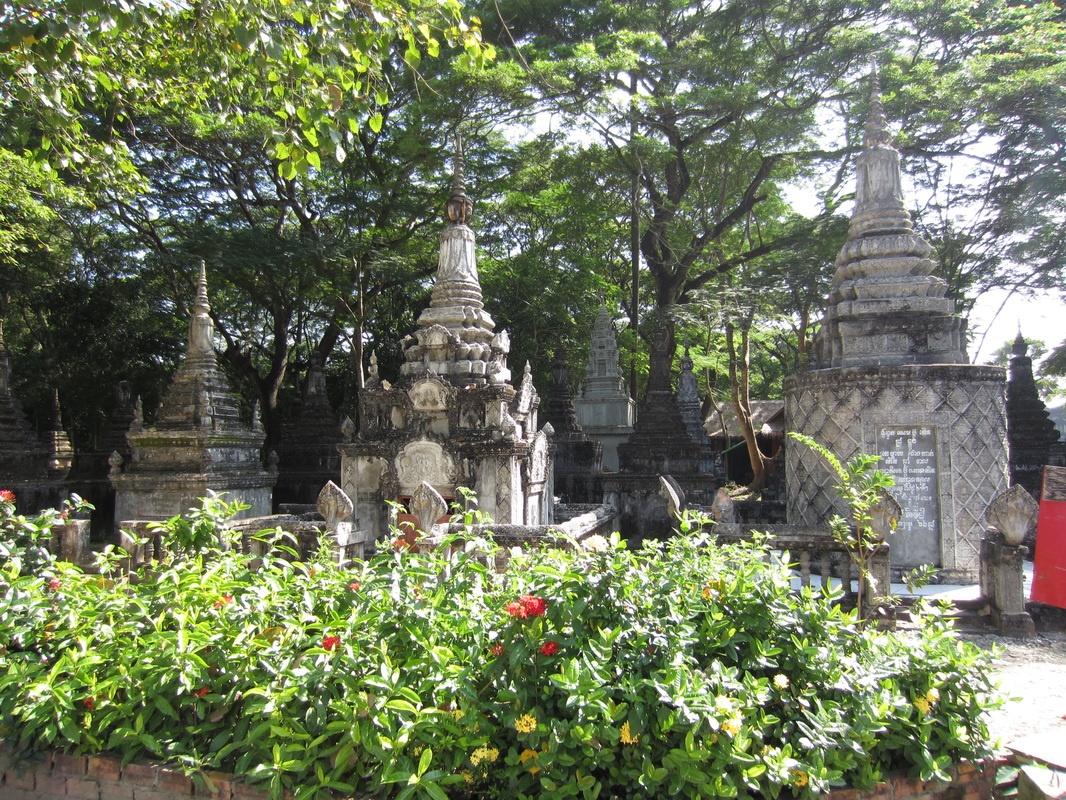

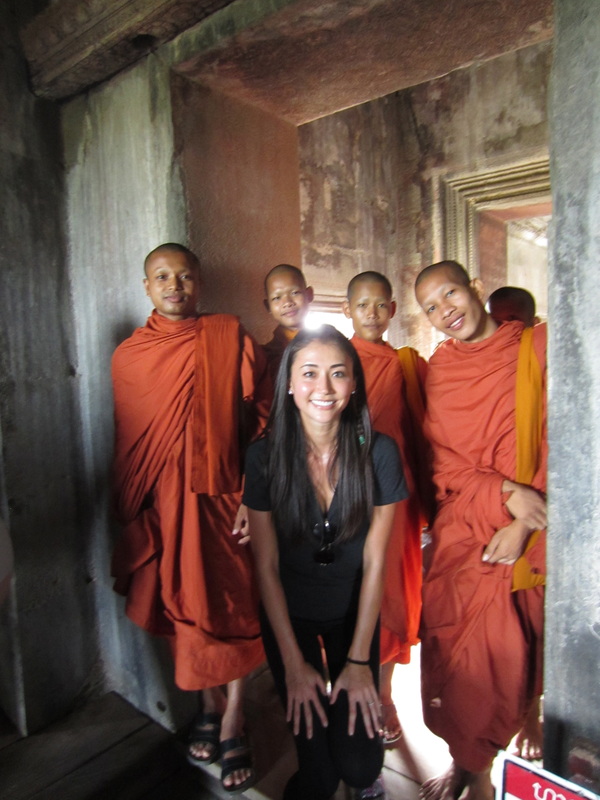
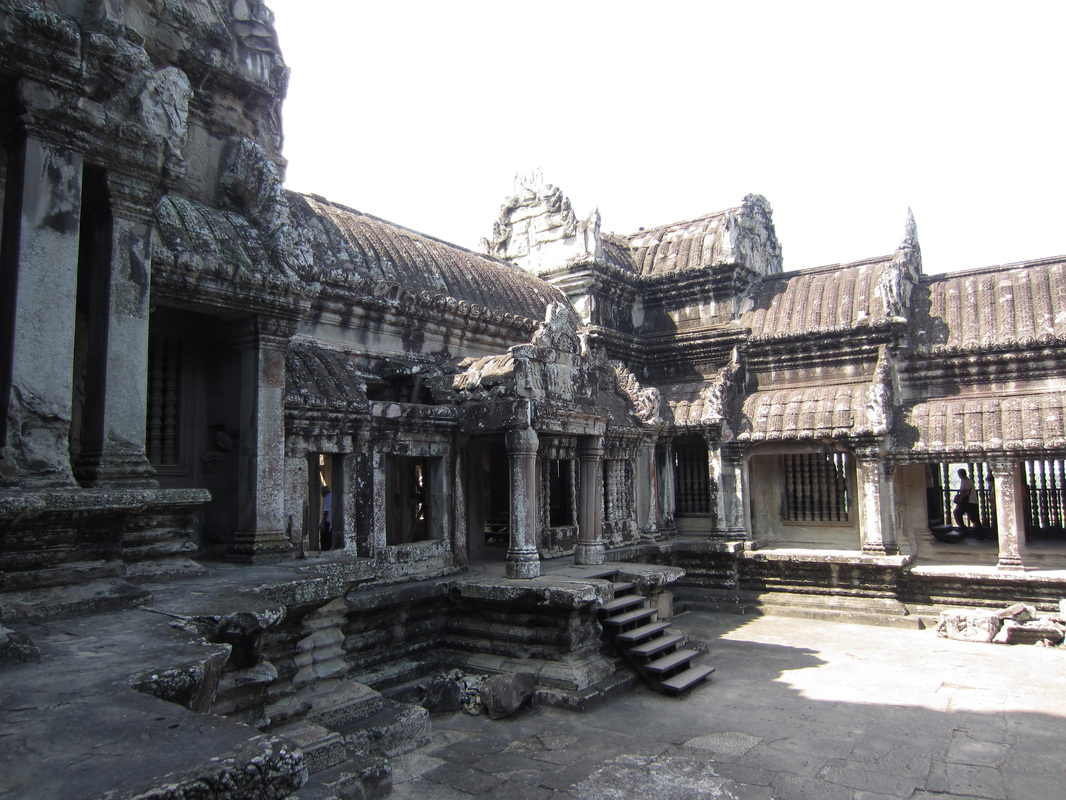
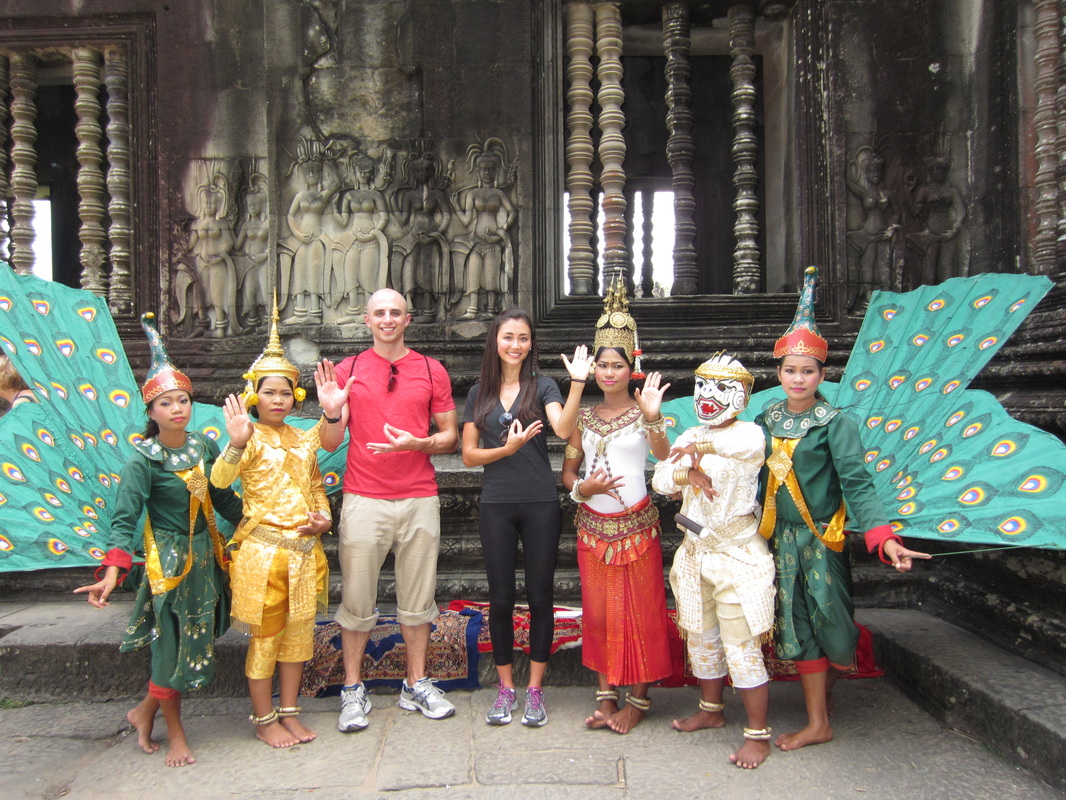
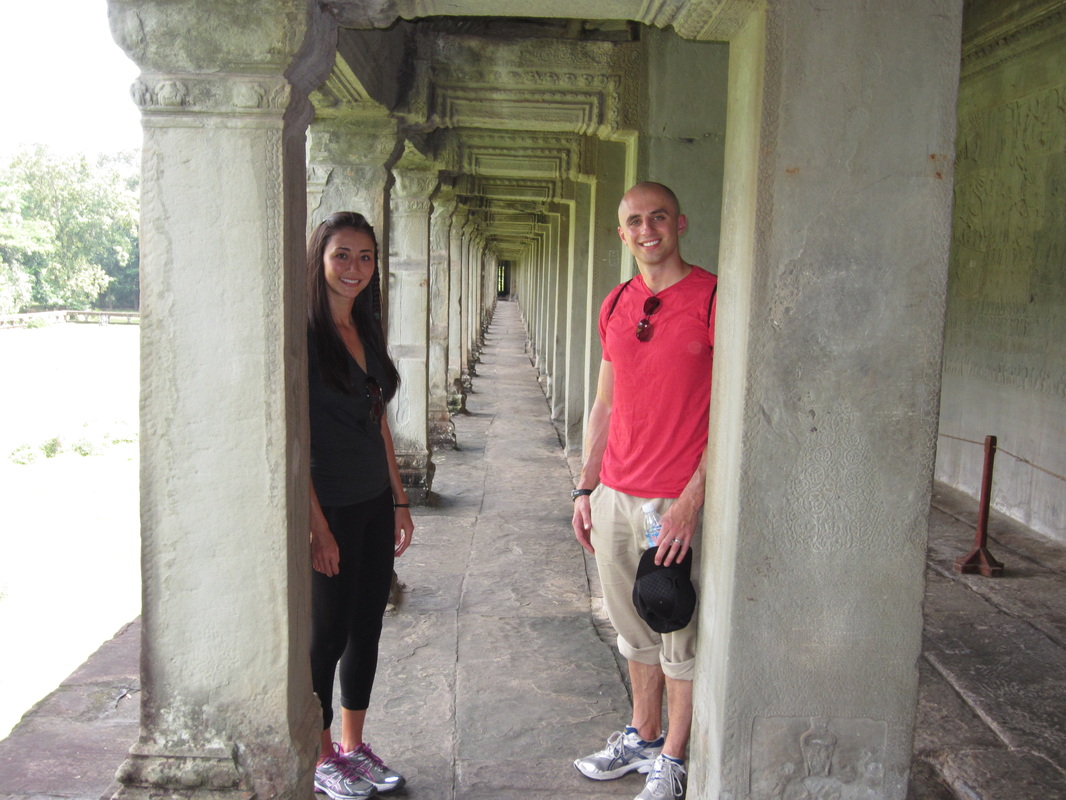

 RSS Feed
RSS Feed